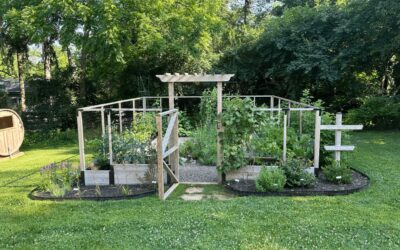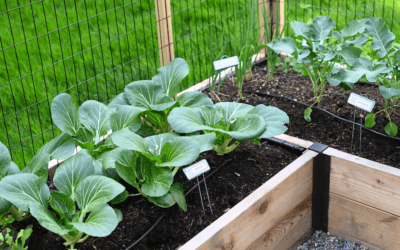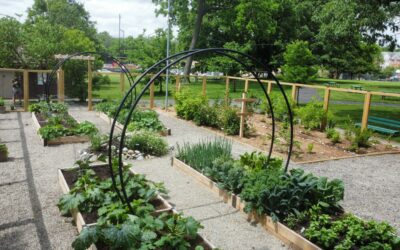As the days lengthen into spring, there’s no better time than now to embark on your gardening journey. If you want to enjoy bountiful harvests in the months to come, the key lies in careful garden planning. Don’t miss this special opportunity to soak up knowledge, anticipate challenges, and optimize results before spring planting season starts.
In this article, we’ll explain why you should plan your garden now to lay the groundwork for a successful spring and summer growing season. We want you to feel empowered to make informed decisions about your garden. Empty raised beds in spring can often feel like a black page: exciting, but also a little intimidating. Many people know what vegetables they enjoy eating, but don’t necessarily know which crops thrive in our climate in different seasons.
Review Basic Growing Conditions
If you’re feeling overwhelmed by options, it may help to review the basic growing conditions of your garden to understand any limitations. Does your garden area receive less than 6 hours of full sun during summer? Then herbs and greens (like lettuce or dill) will perform best in your raised beds. Do you have an irrigation setup or another way of providing consistent water? If not, then seeded crops won’t be as reliable due to spotty germination.
What to Plant in Spring Gardens
If you want to start growing as soon as possible, consider planting a variety of frost tolerant, “quick spring” crops like lettuces, radishes or cilantro. In the Philadelphia region, most frost tolerant crops can be planted at the end of March. Quick growing spring crops will be ready to harvest throughout March and April, and can typically be removed to make way for summer plantings around mid-May.
Transplanting plant starts where applicable, rather than direct seeding, can provide a head start to growth and harvest. Local nurseries typically carry spring starts and can help you learn what grows well in your area, so you can confidently choose crops that fit your garden and lifestyle. We find that greens are a popular spring crop because they come in many varieties and can be incorporated into a variety of cuisines.
Other spring crops mature slower, and stay in the garden past summer planting. Some of these crops provide the satisfaction of planting once and harvesting multiple times – like snap peas – and some are just slower to mature like onions or carrots. Take this into account when planning your summer garden. Finally, summer crops like ever-popular tomatoes, peppers and cucumbers can be planted as appropriate.
How to Plan Summer Succession Planting
If planning a multi-season garden all at once sounds like too much time and effort, don’t worry! You can use a method called succession planting to gradually introduce summer crops into empty spaces in your garden, while allowing late spring plants to mature.
Succession planting is not only a space-saving technique but also a strategic way to ensure a continuous harvest throughout the growing season. When planning your succession planting, consider the maturity dates of different vegetable varieties. As spring crops mature and are harvested, replant the vacant spaces with warm-season vegetables. Knowing the expected harvest times and the space requirements of each plant will maximize your garden’s productivity. For this reason, planning your spring and summer garden layout simultaneously will reduce decision fatigue later in the season. You’ll be surprised how much you can grow!
One of the primary benefits of succession planting is that it maximizes the use of available space in your garden. By efficiently filling in gaps left by harvested crops with new plantings, you can ensure that your garden remains productive throughout the season. Additionally, succession planting helps to extend the harvest window for certain crops, providing you with a longer period to enjoy fresh produce from your garden.
Plan for Garden Success with Vertical Trellises
Other ways to create functional space is by using vertical growing. Vertical trellises can include metal tomato cages, bamboo trellises, gate arbors and any other structural element that can support the weight of heavy plants. You can use these structures to train vining plants like cucumbers or squash to grow upwards instead of outwards: leaving more square footage for other delicious crops. Try to place taller plants and structural elements on the north side of the garden, opposite the sun so as to not create shade over other plants. In addition to saving space, vertical growing can help improve plant health with improved air circulation.
With a little planning, you can easily turn your vegetable garden into a flourishing and bountiful oasis! Whether you’re a novice gardener or a seasoned pro, planning your raised bed garden should be adaptable and fun. Although certain guidelines will help your garden thrive, don’t be afraid to try a crop you’ve never grown before: or to ask a local gardening expert for advice. Don’t wait to start planning your edible garden today.
Next Steps to Garden Success
Don’t spend another year feeling frustrated or intimidated by your garden. Start your homegrown food success story today! Book an Initial Consultation to chat with one of our expert garden designers about your personal garden goals.



